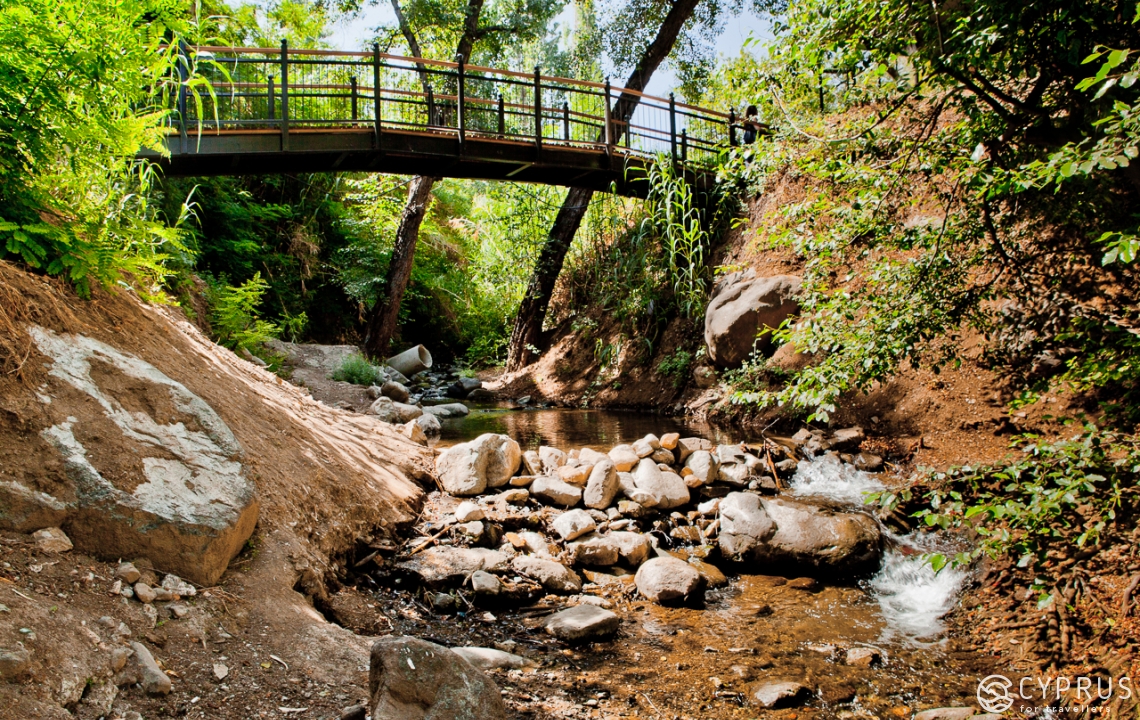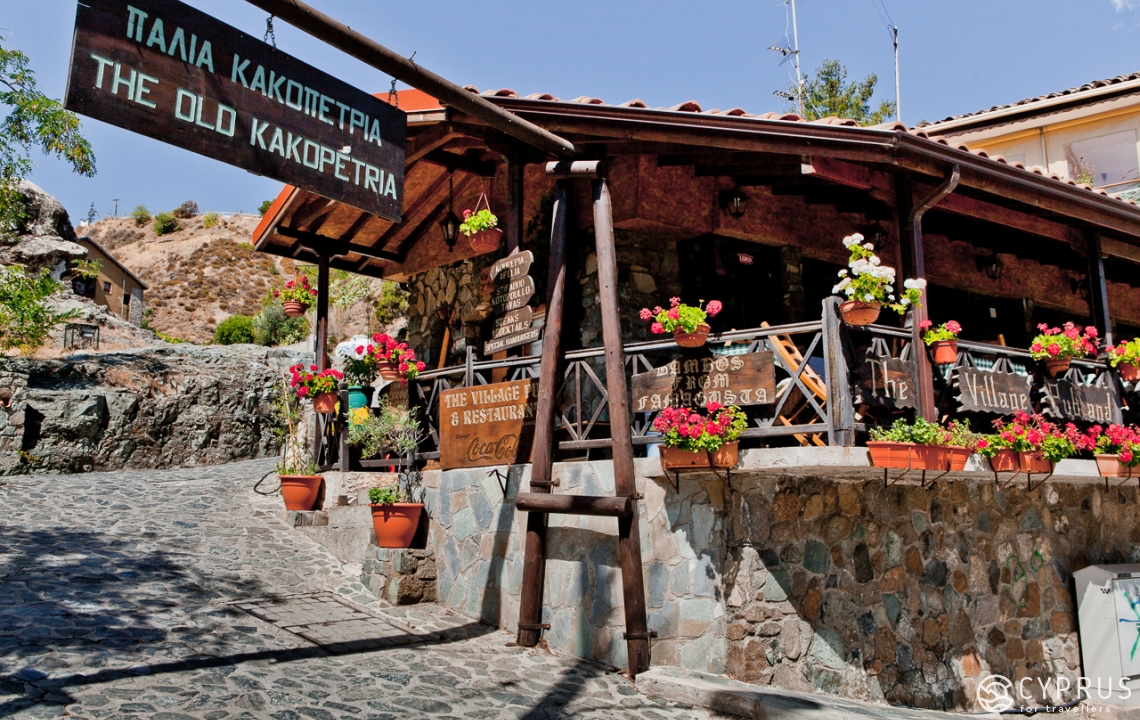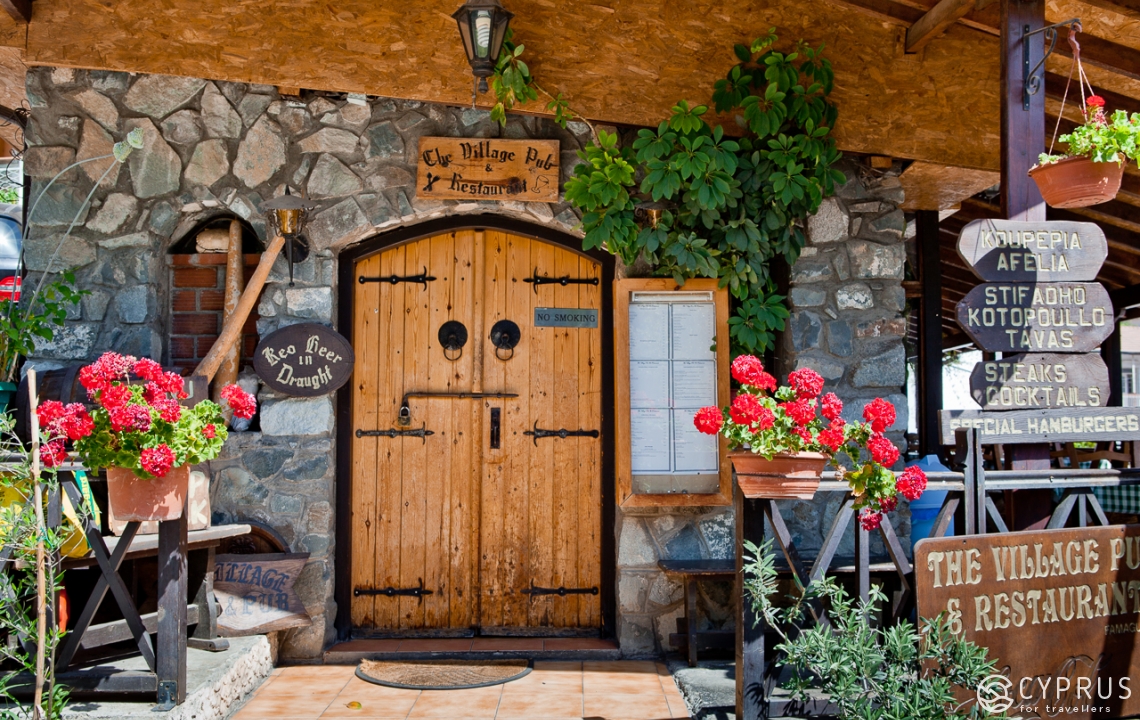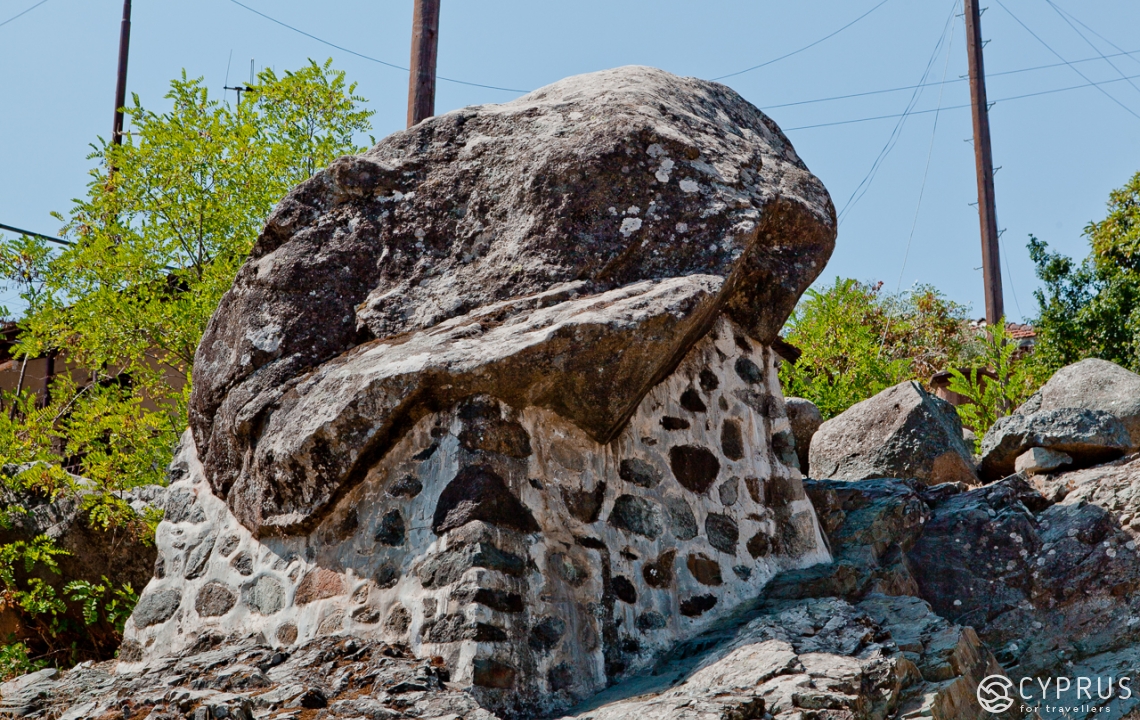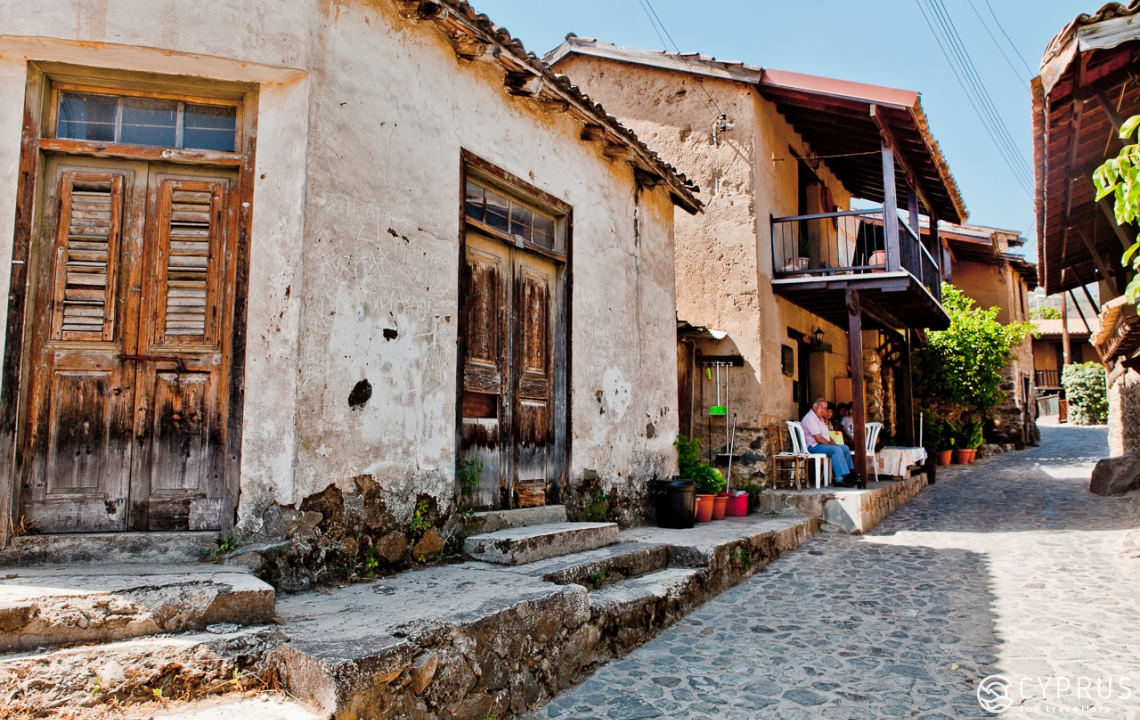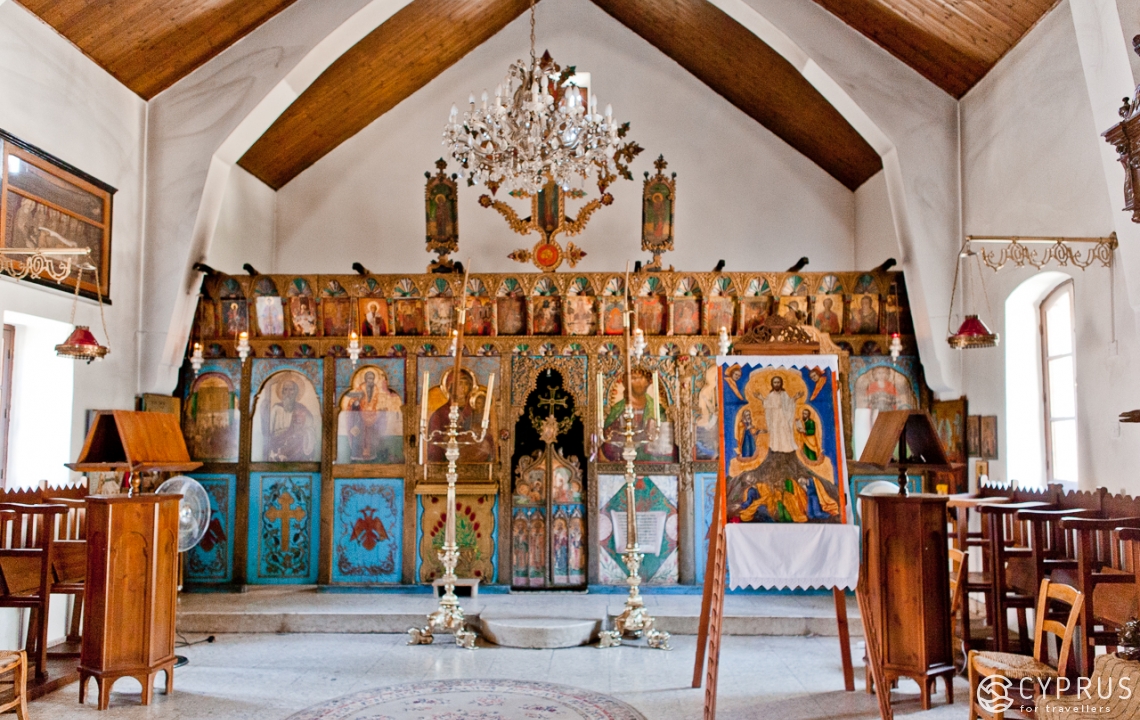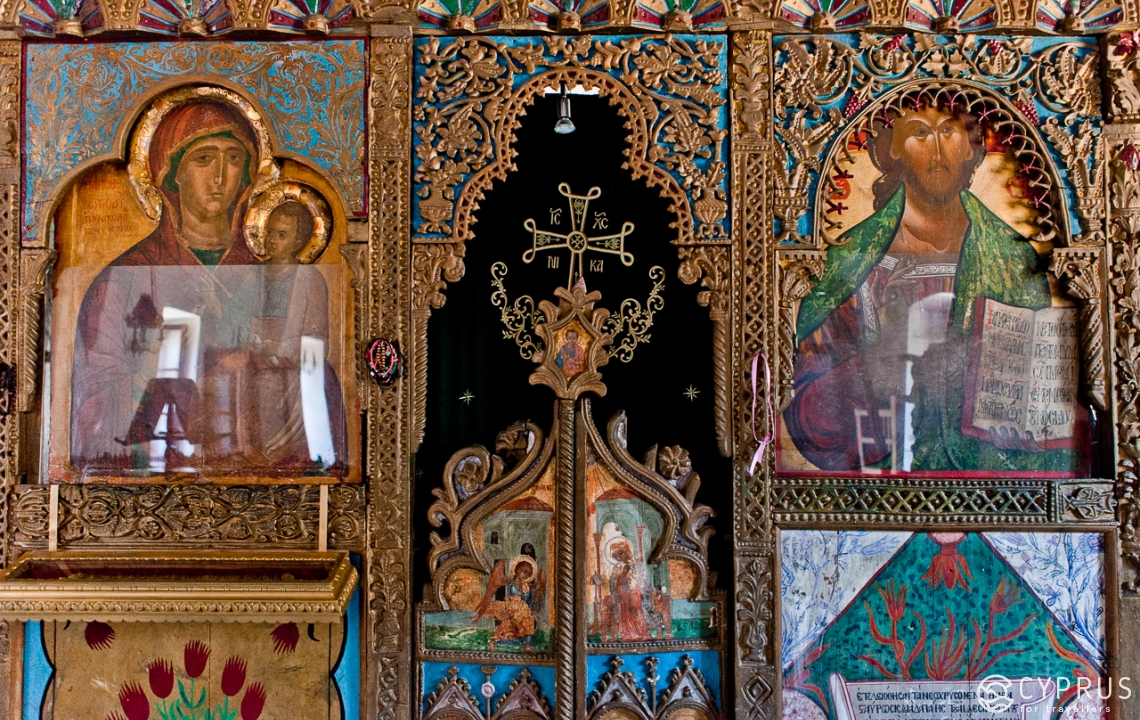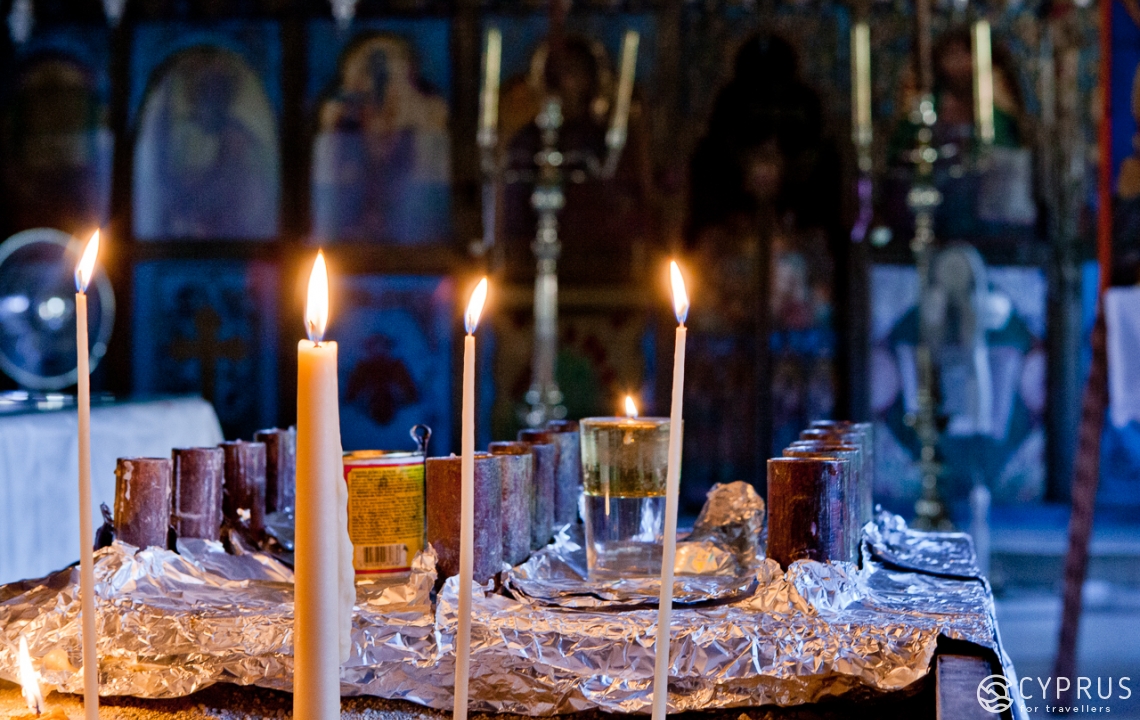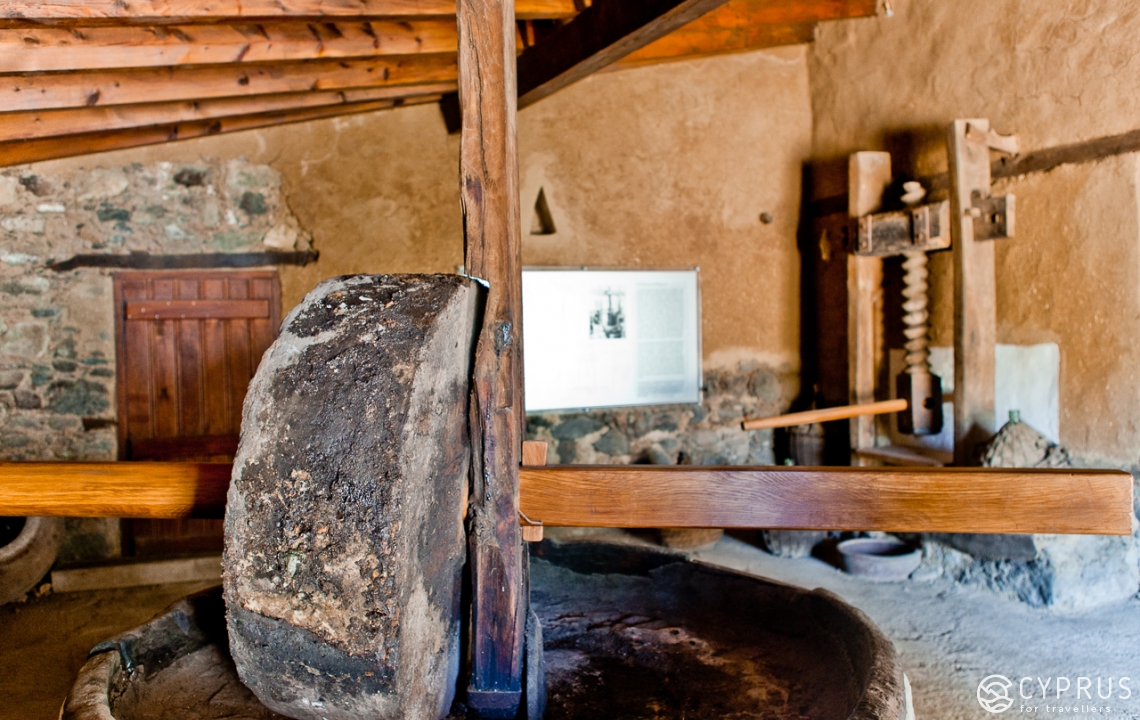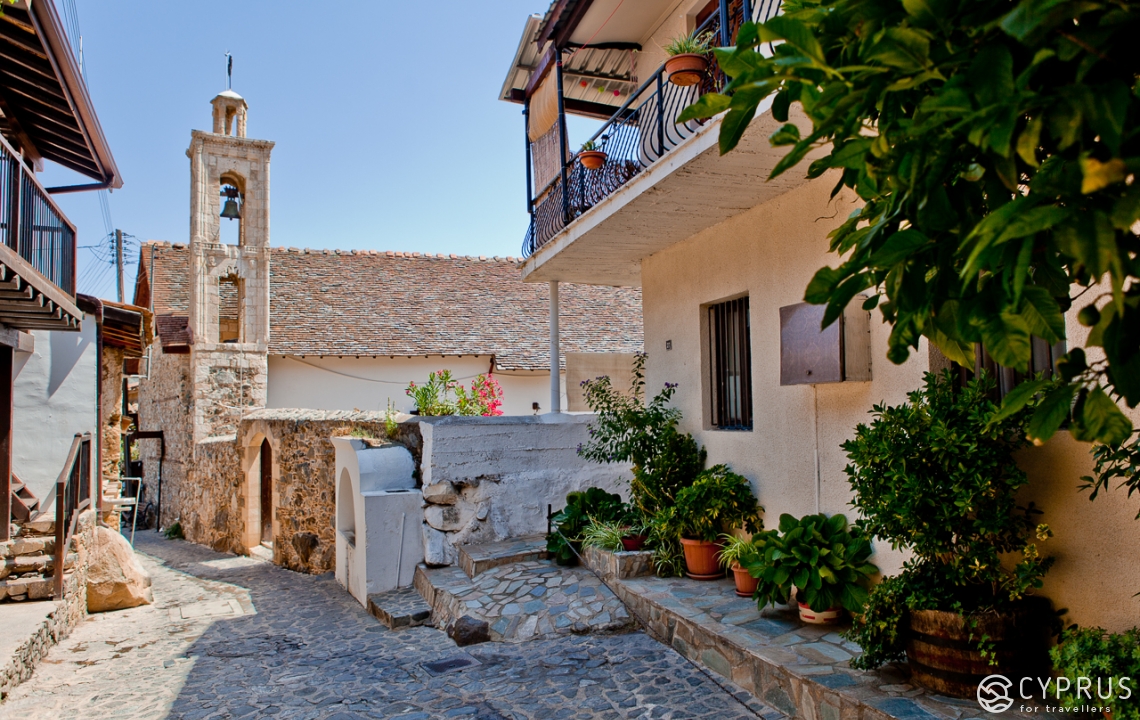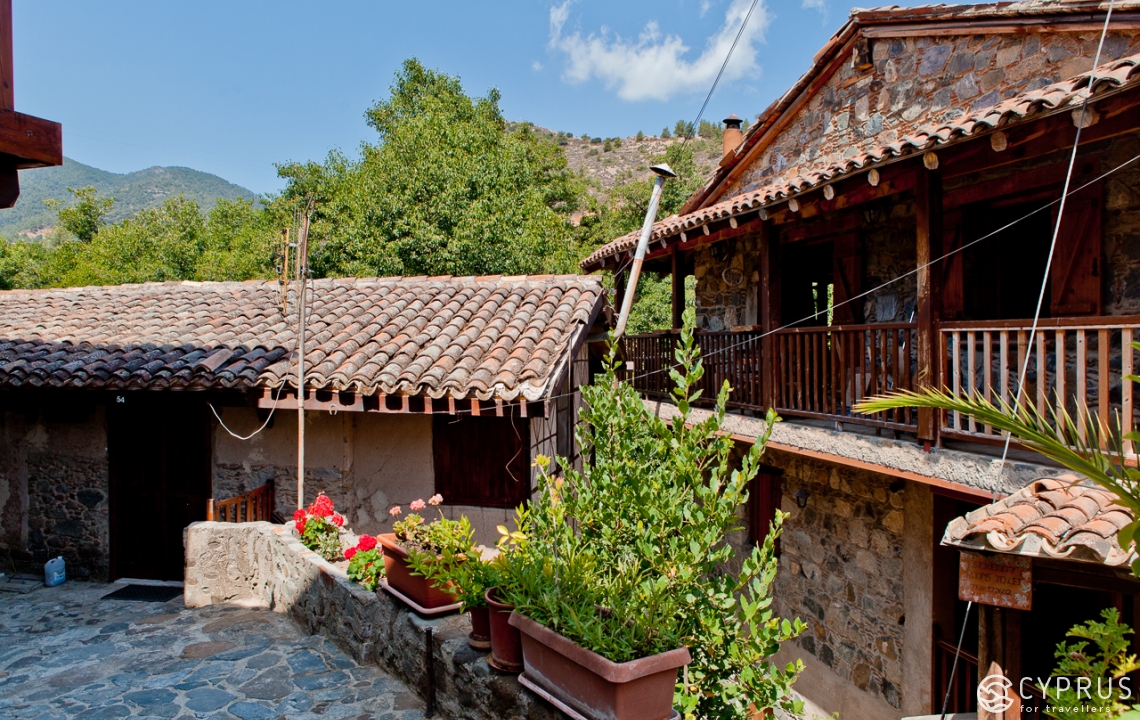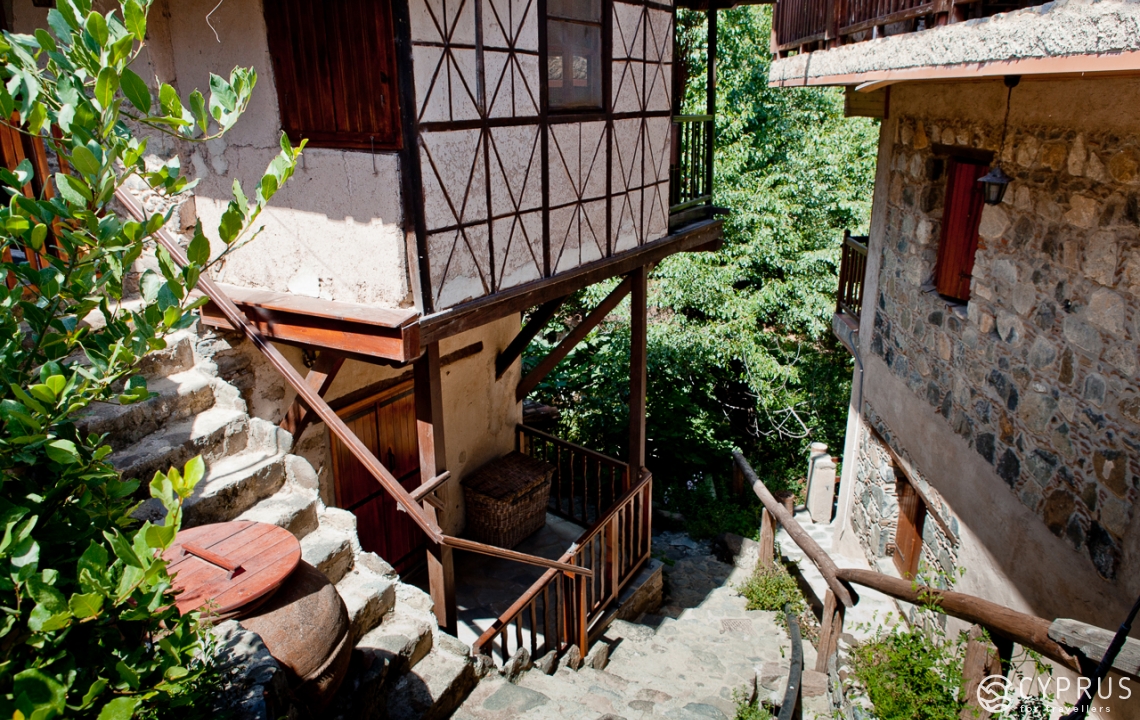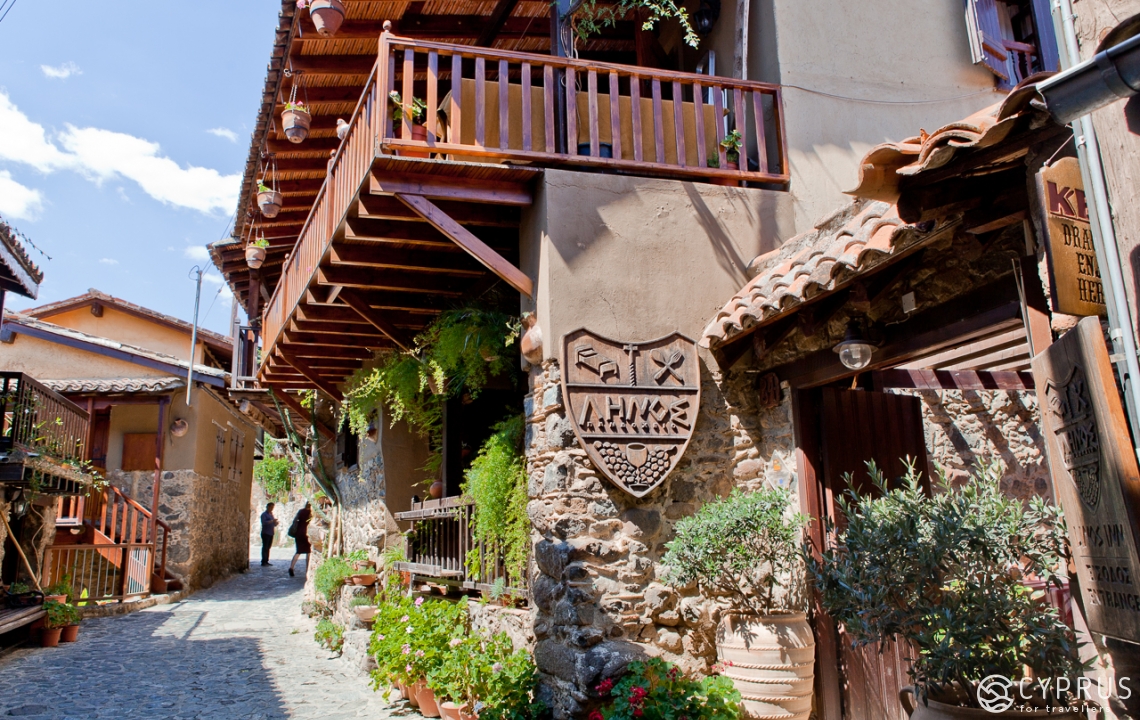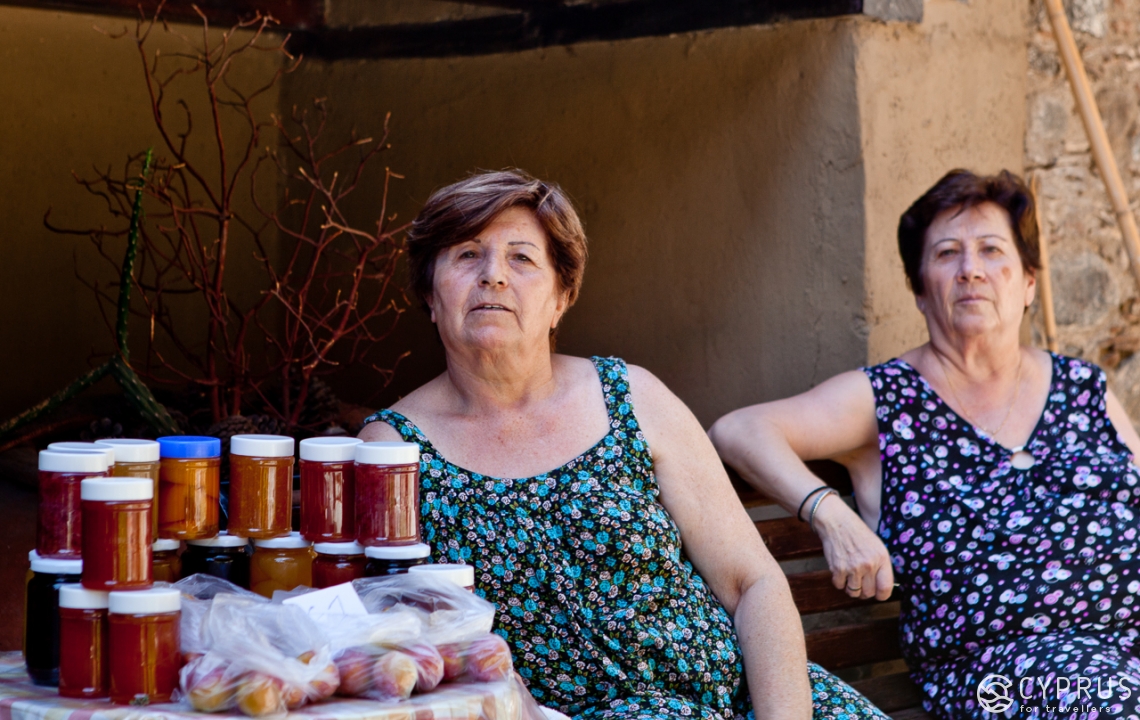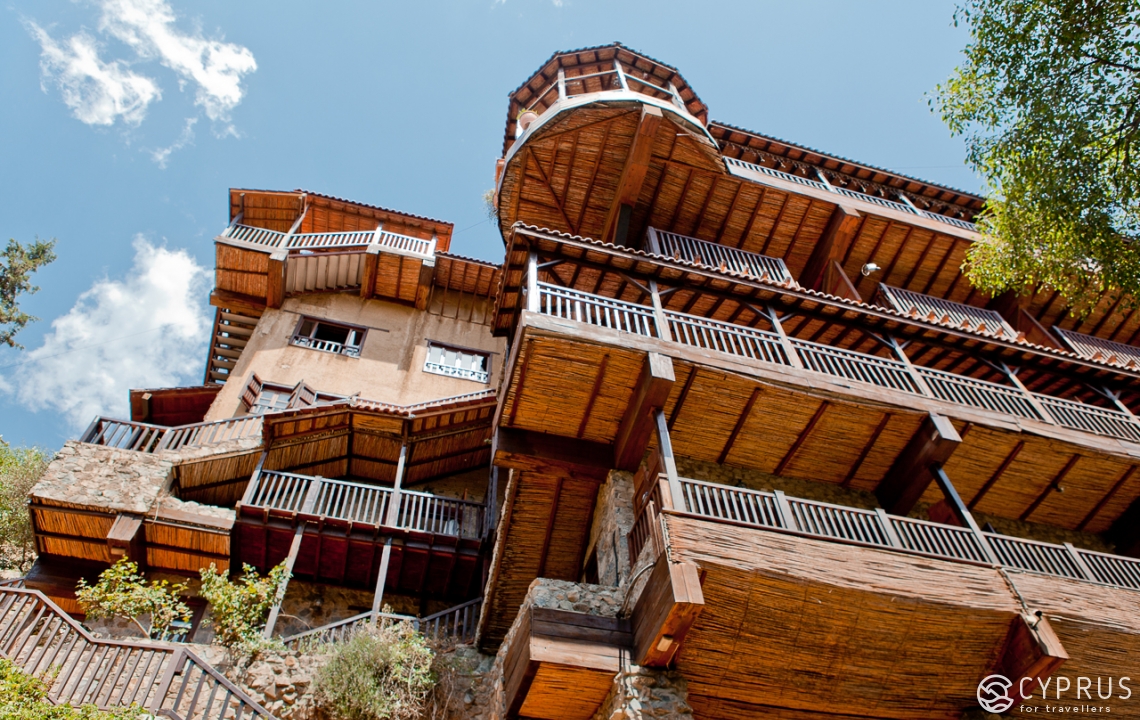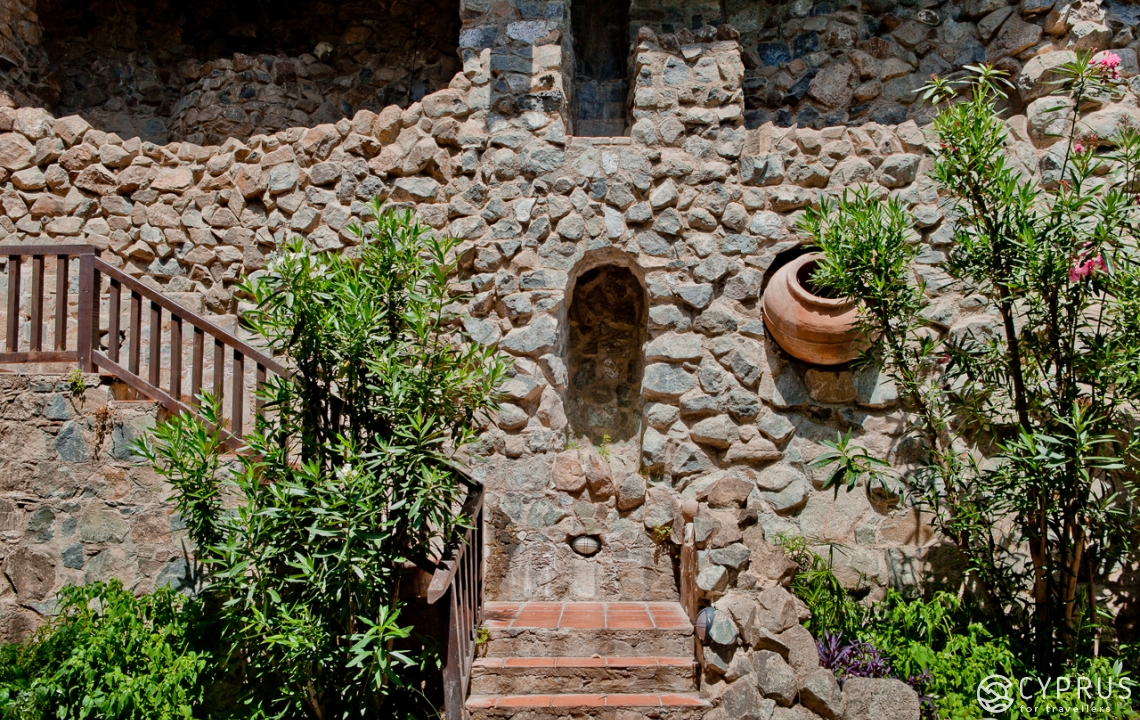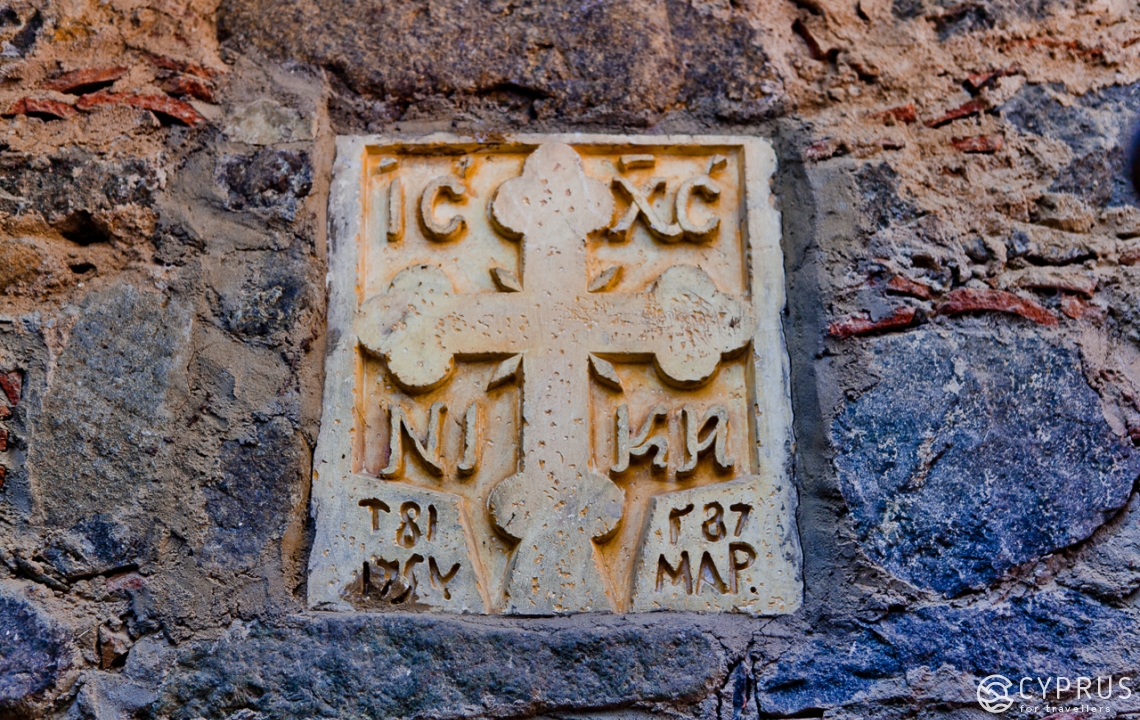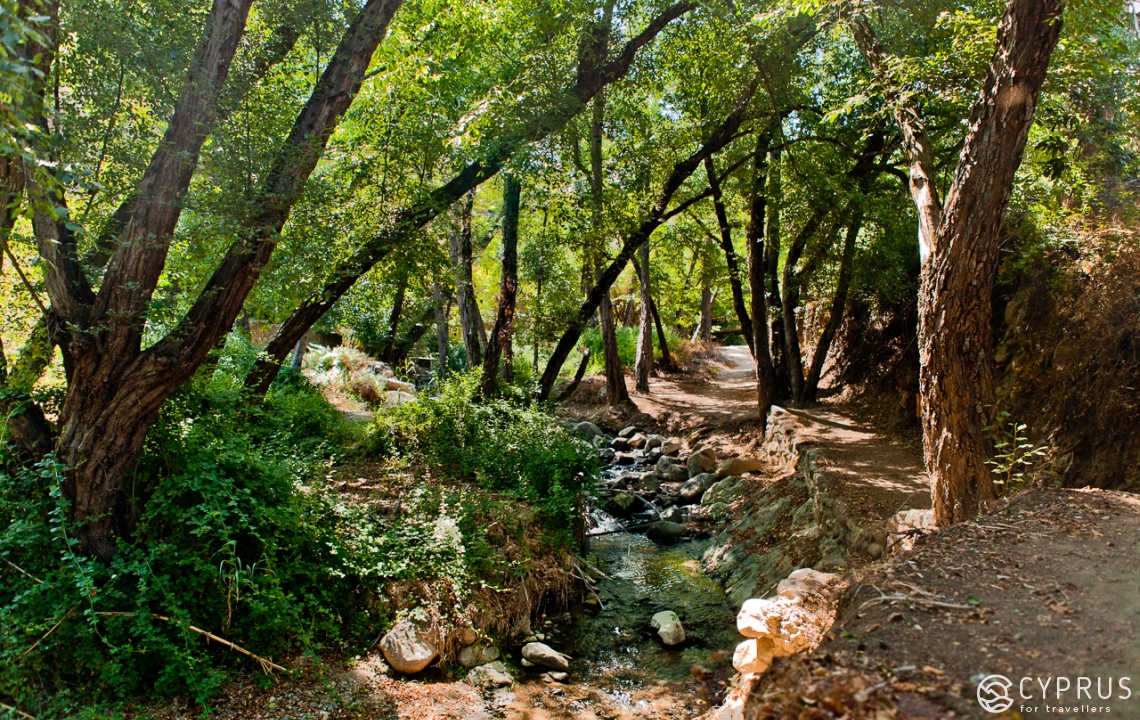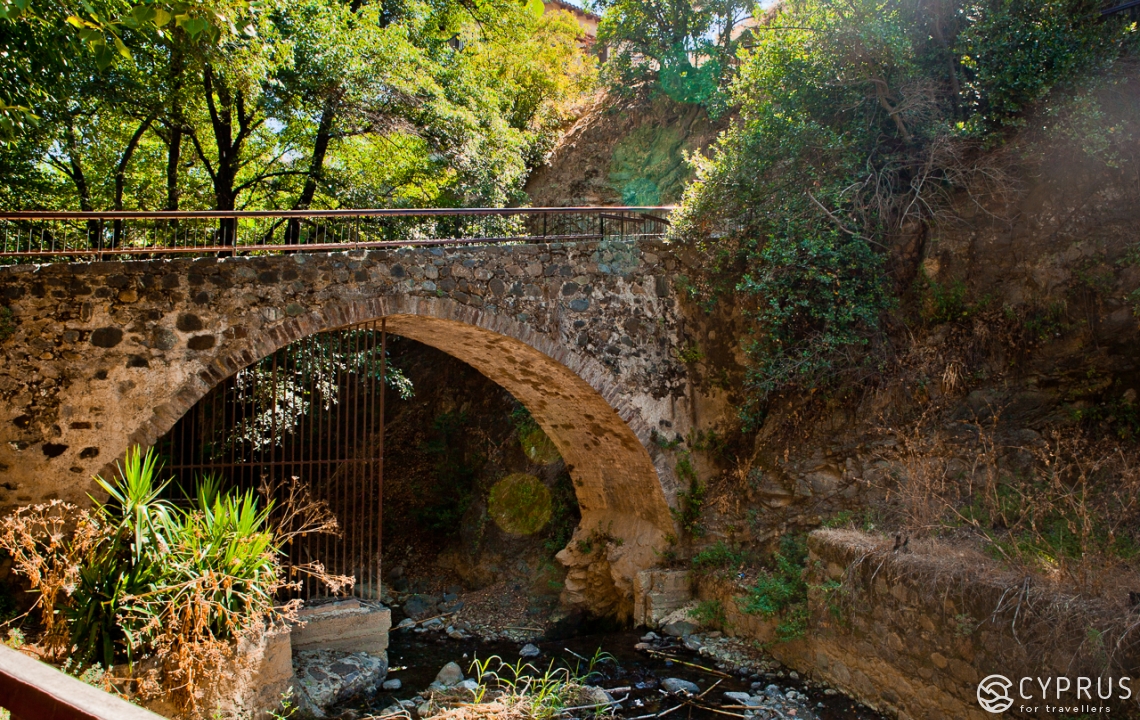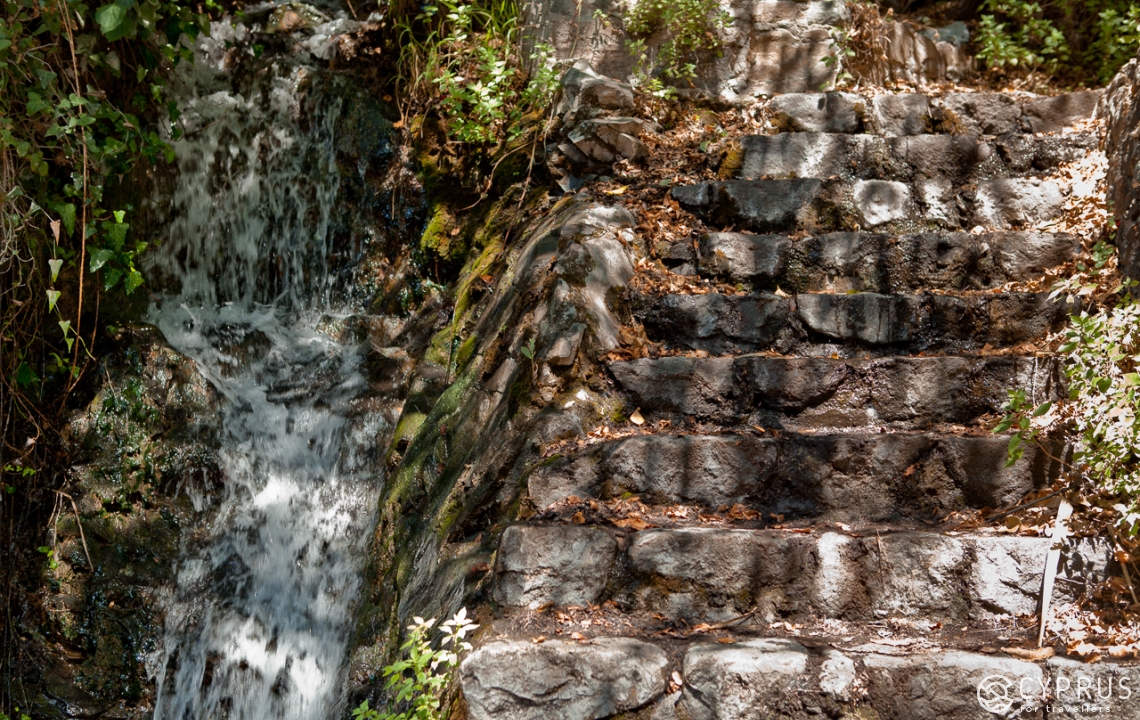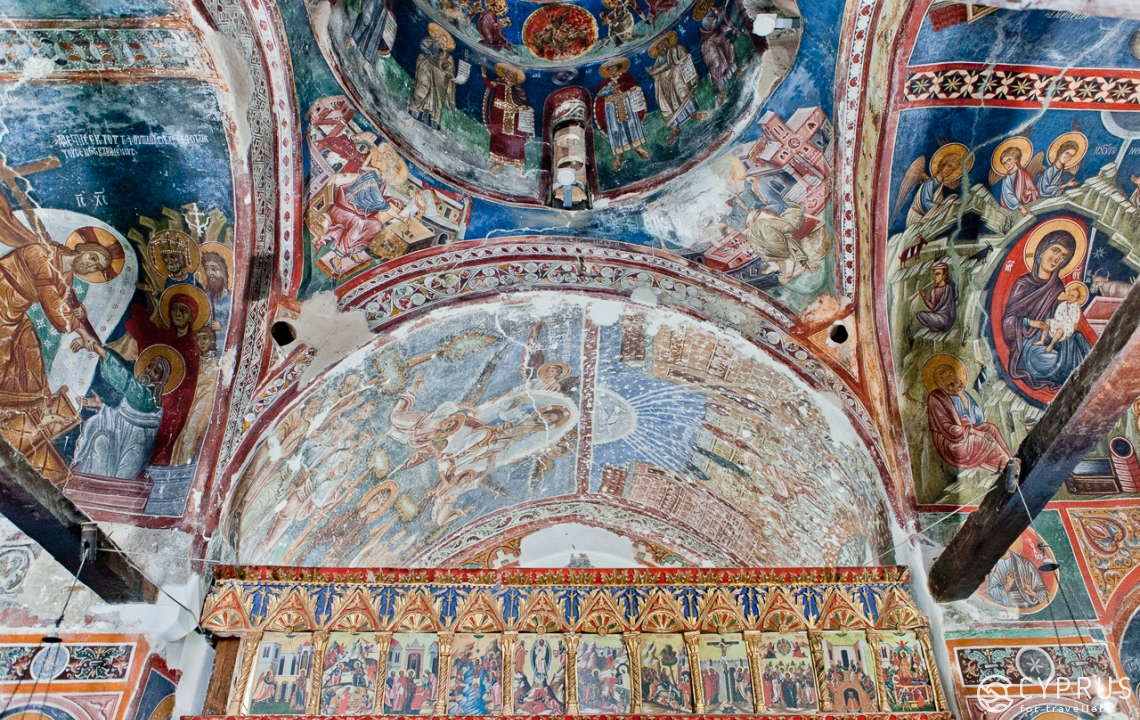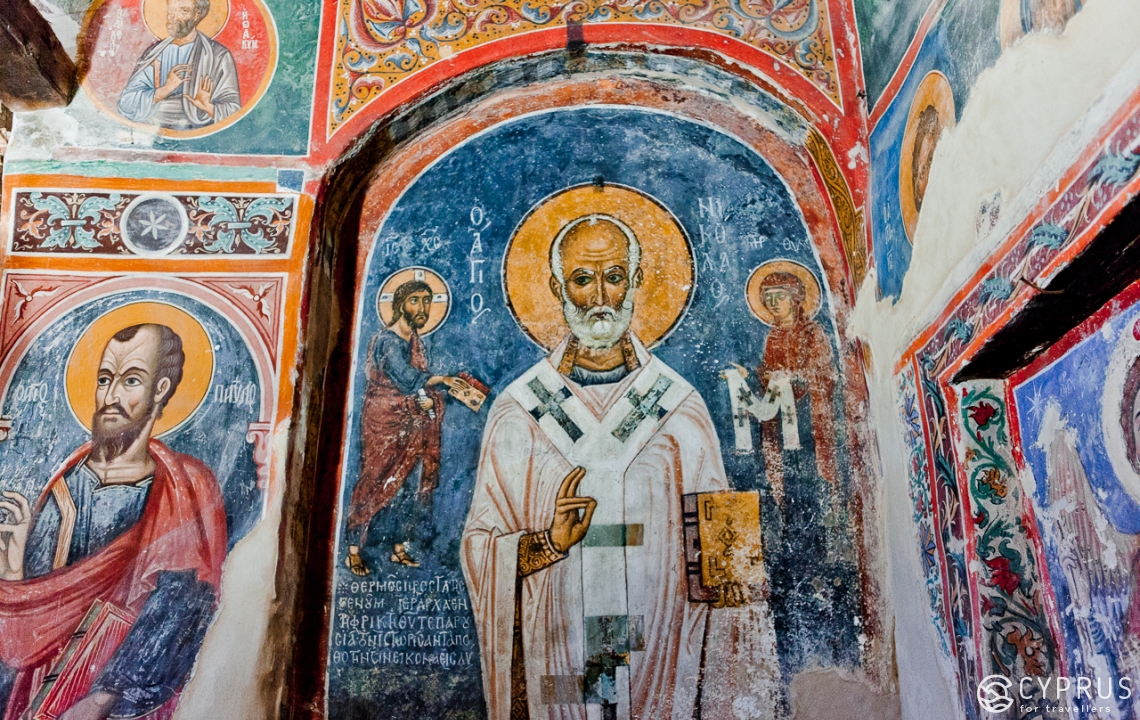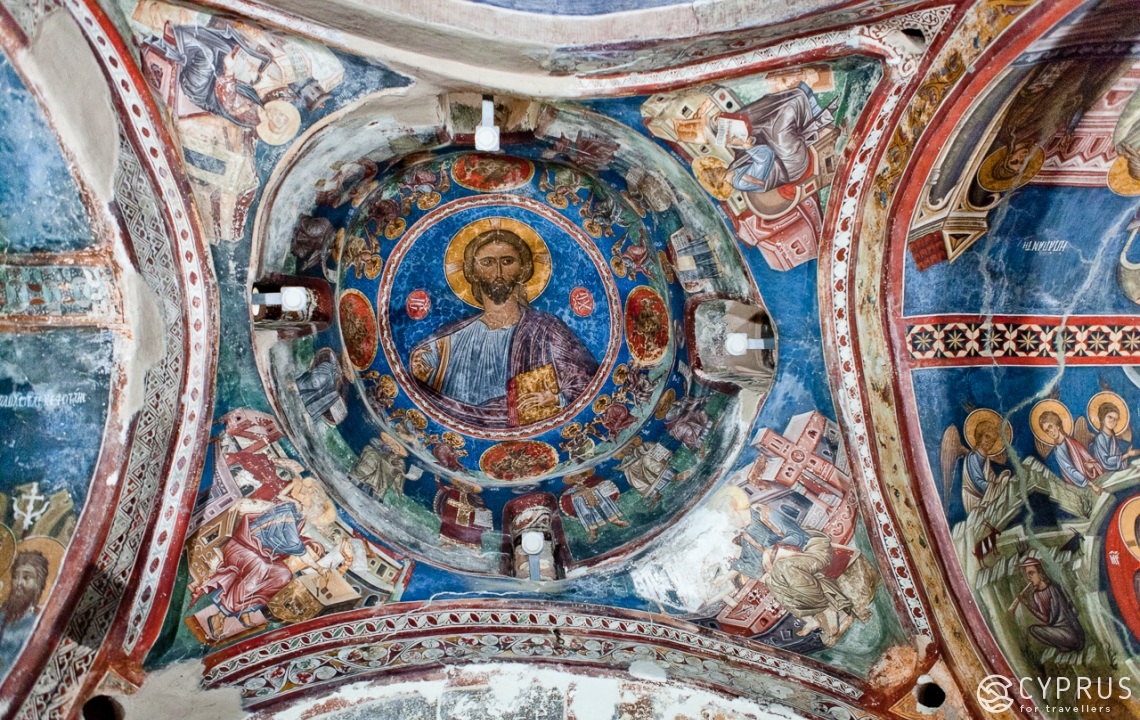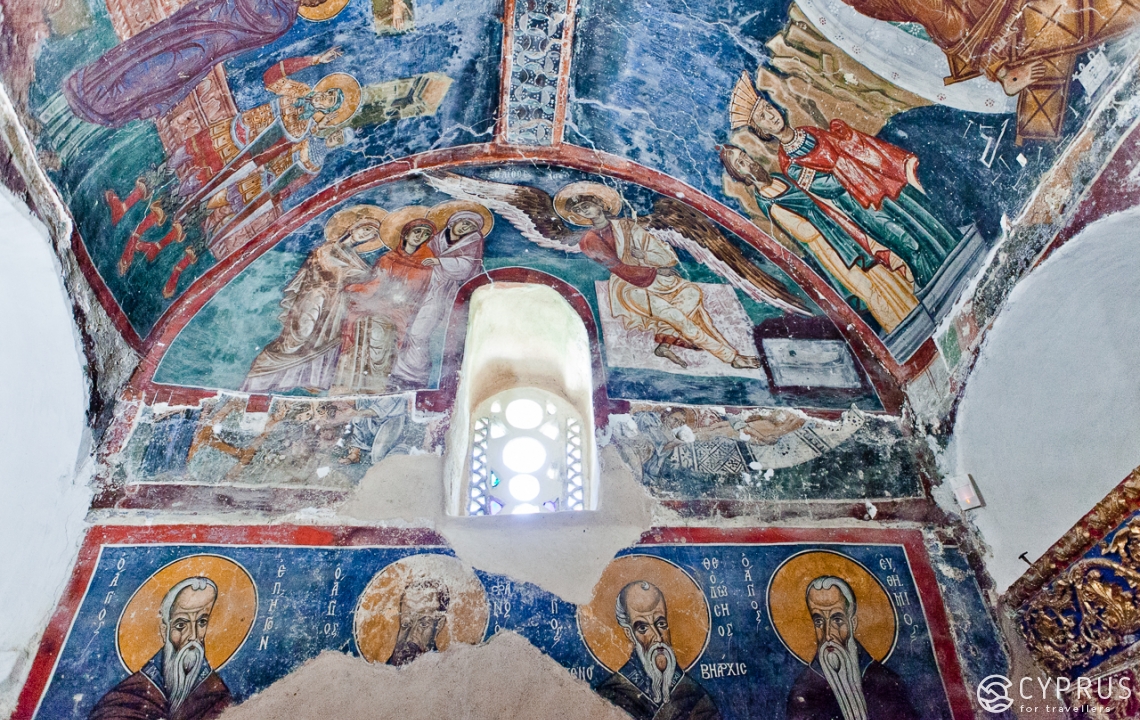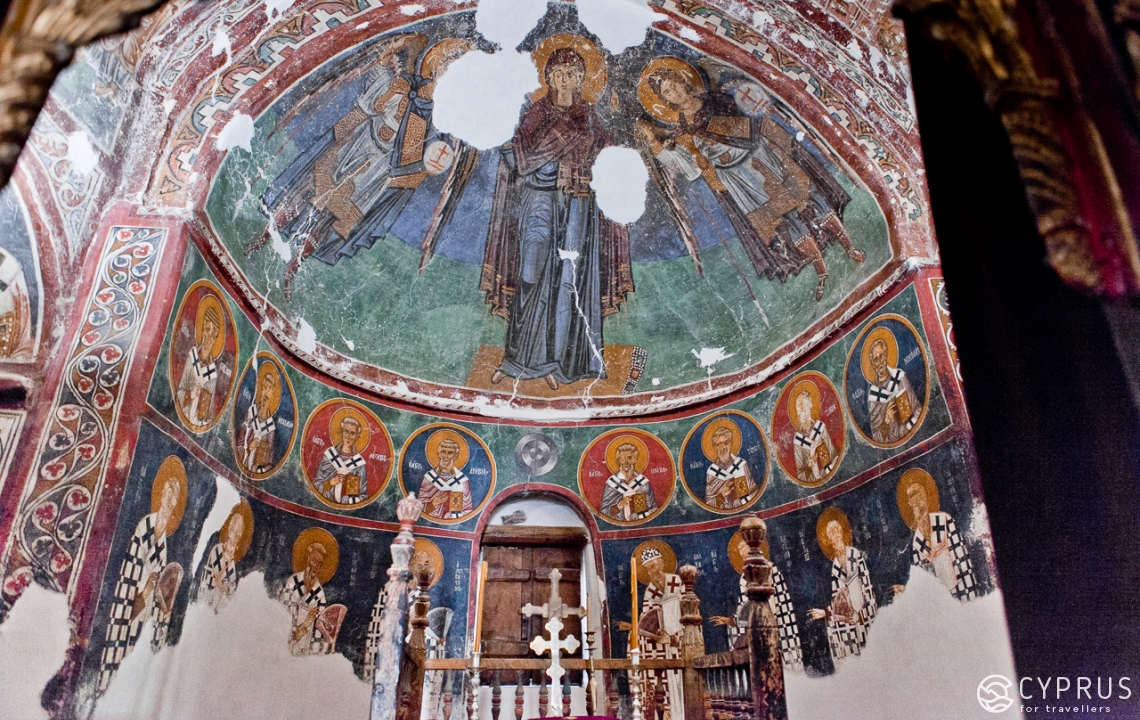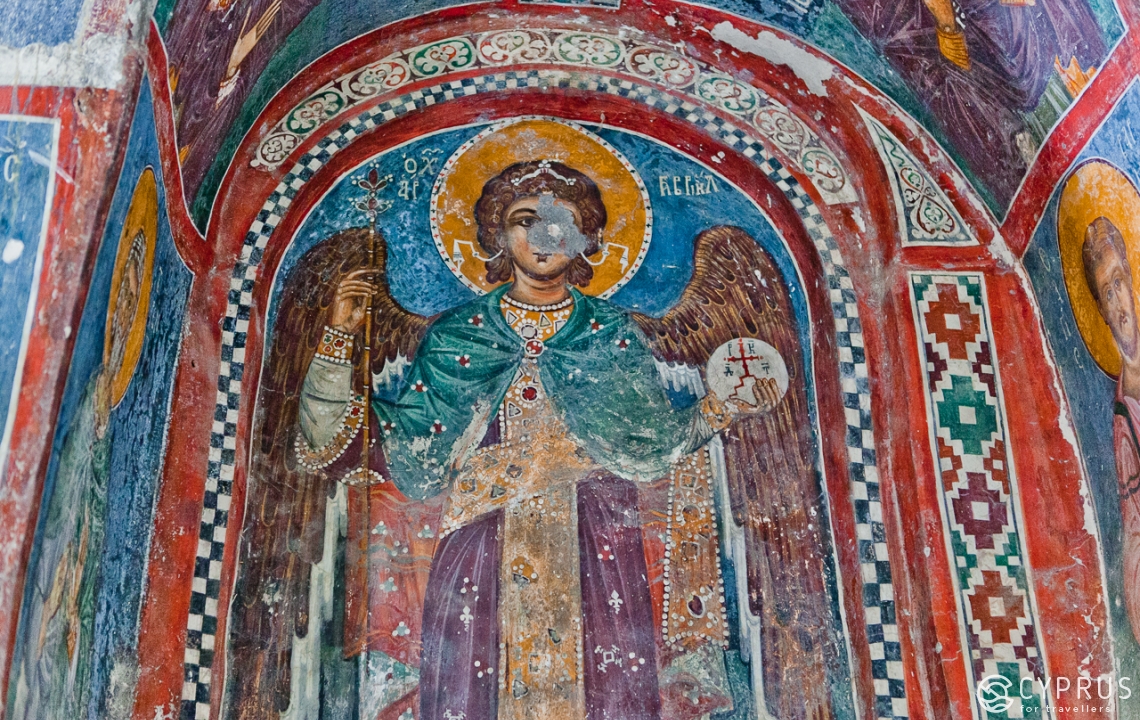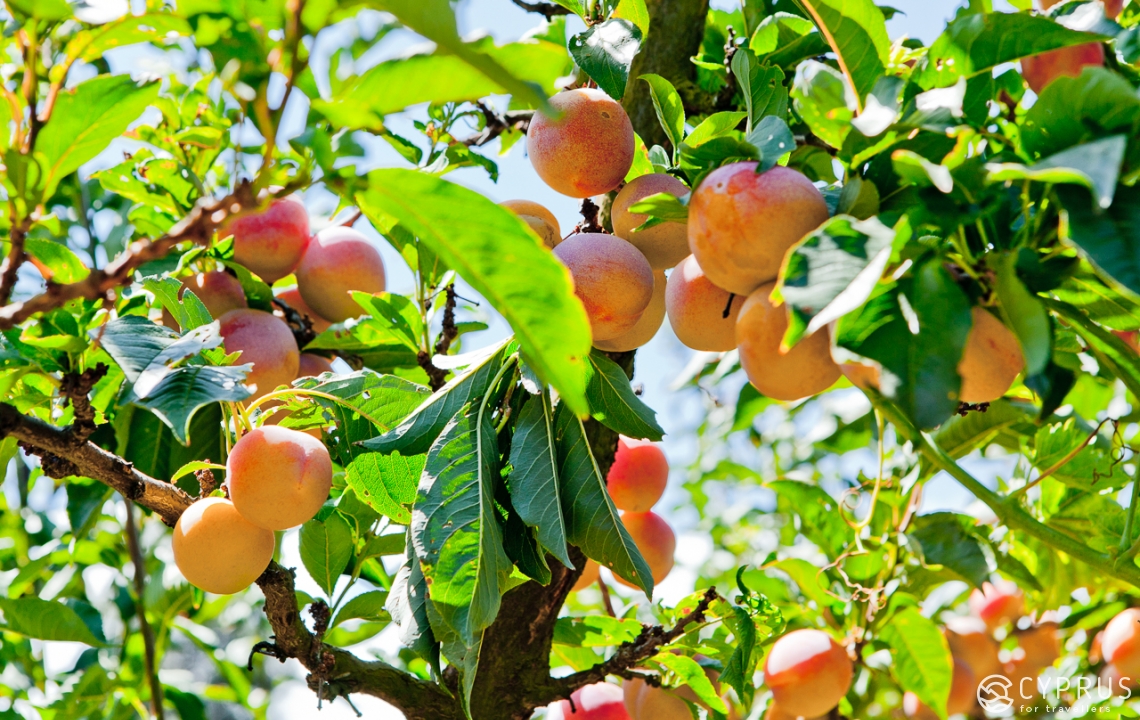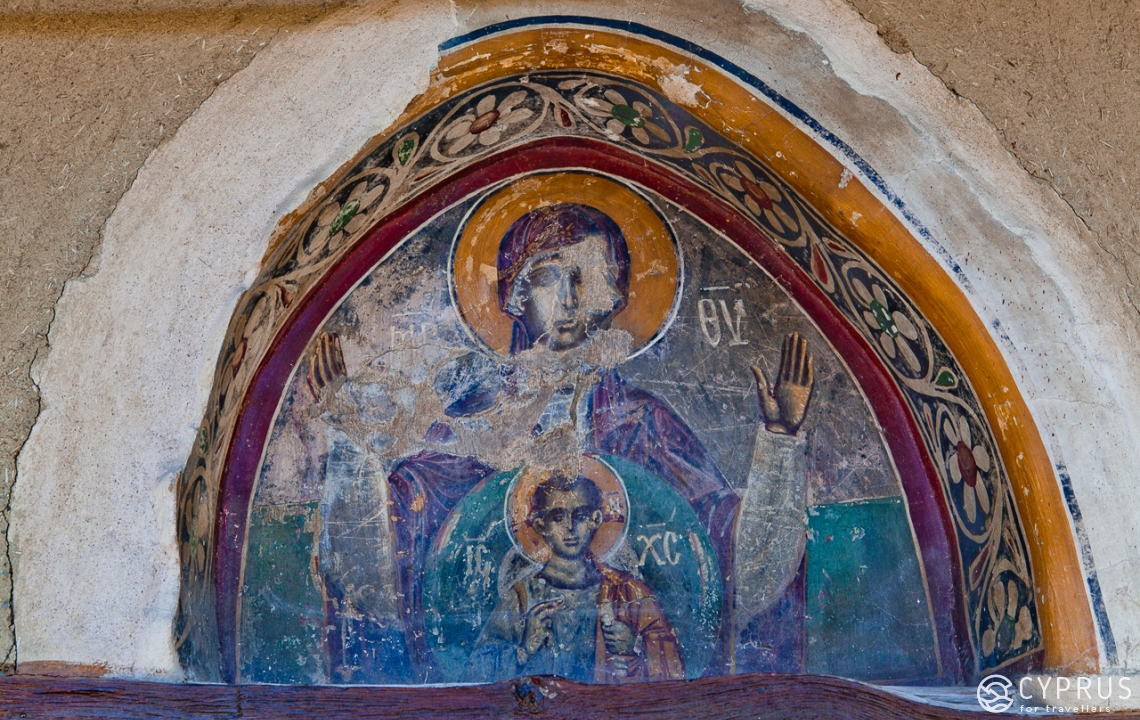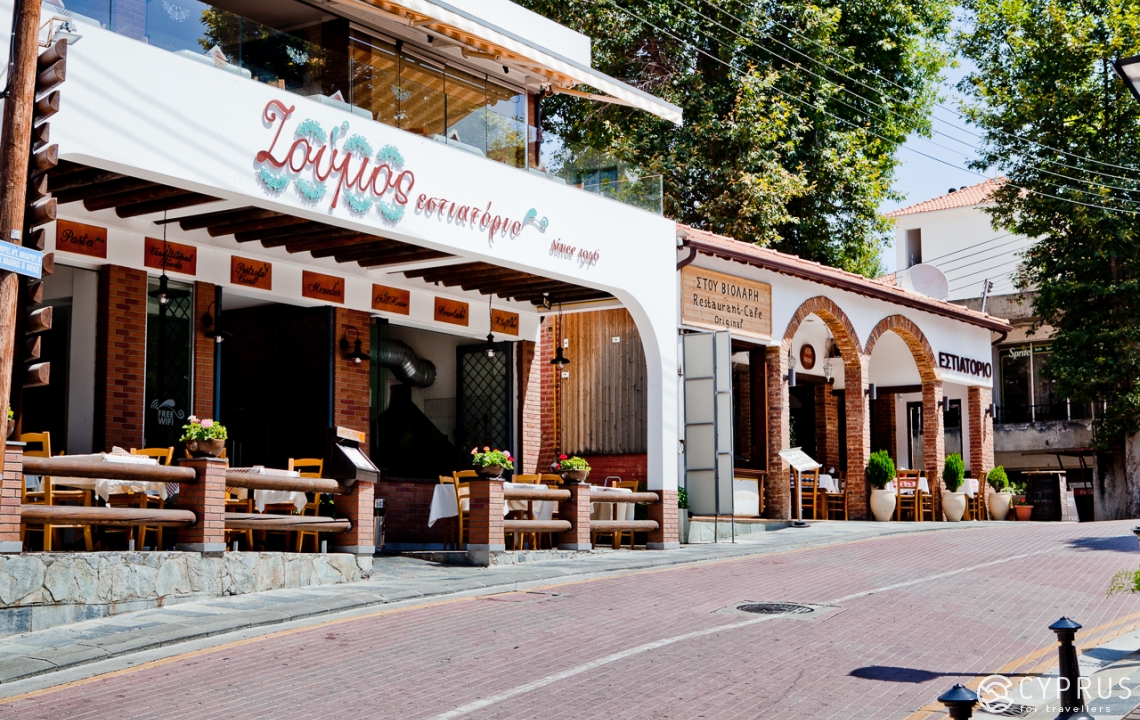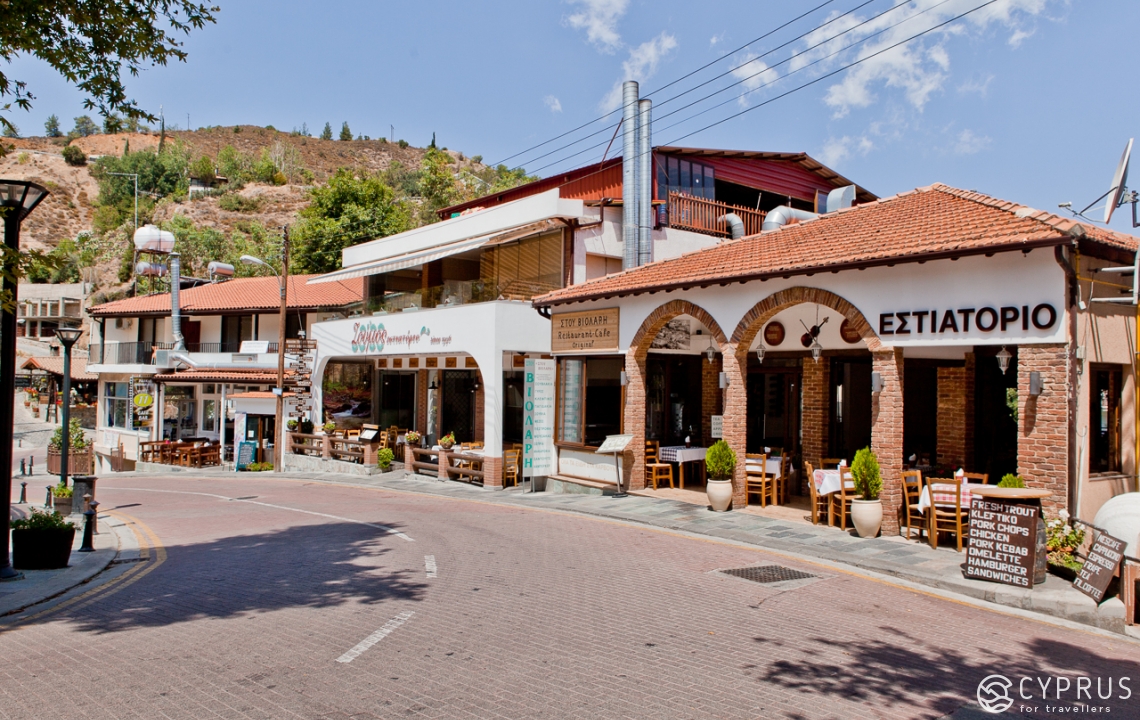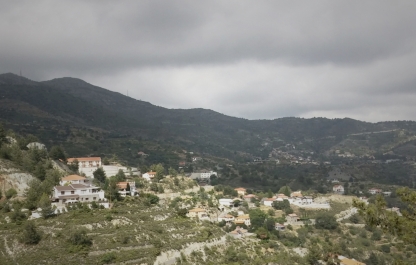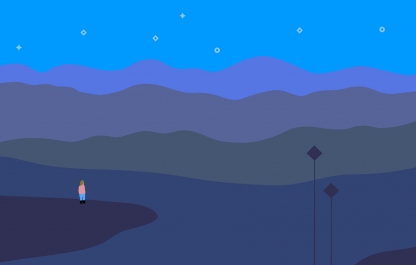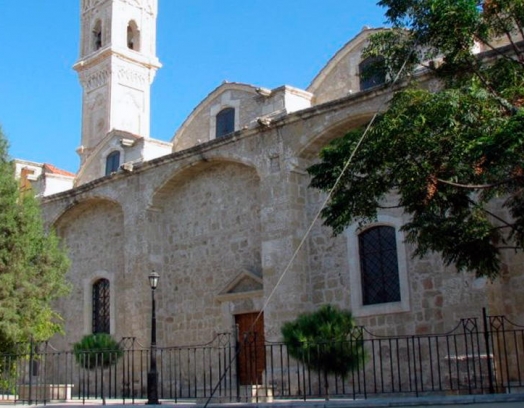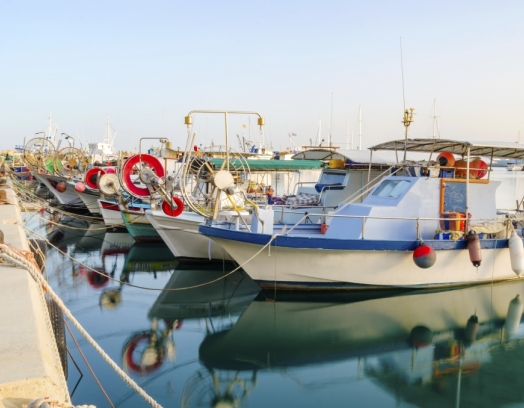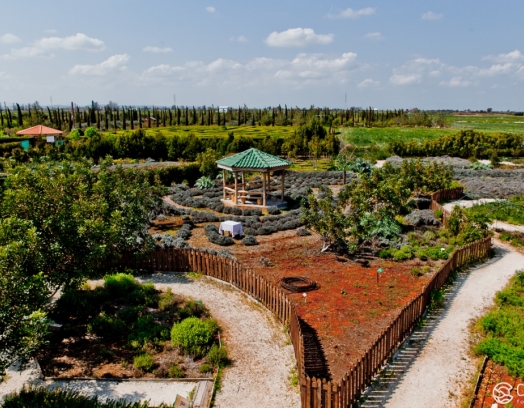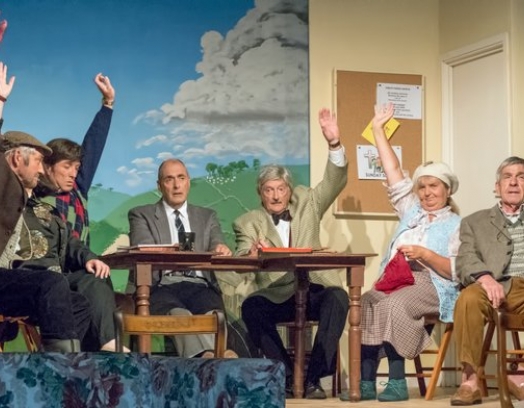The first settlements of Kakopetria appeared here in the 6th-7th centuries. Today, it is perhaps the most famous and frequently visited village in the foothills of the Troodos Mountains in the Solea valley. It is 55 km from both Nicosia and Limassol. Nowadays, the village has about 1300 inhabitants. We were invited to go for a walk by the deputy mayor Mr. Lakis Charalambous, who promised to show us all the fascinating places nearby and tell us all the local secrets and stories.
It doesn’t matter when you visit, the sound of the water abounds throughout the village: two mountain rivers, the Garillis and Kargotis meet here and form one great river, the Clarios. In turn, this runs through the valley in occasional picturesque waterfalls with foaming cascades in the midst of the tourist area. However, the torrent has largely been calmed and mostly flows in paved canals, which supply water to the local gardens and vineyards. In places, rural irrigation ditches overlap as they run through one part of the village to water the land in another area.
We visited Kakopetria, the village of «bad stone» (from the Greek: «kakos» meaning bad and «petras» meaning stone) or, as another version has it, «bad Petros», said to be the brother of the «good» Kalopanagiotis, who the neighbouring village was named after (a place we will explore one day) on a sweltering summer day. The front gardens were wild and overgrown, yet interspersed with flowering bushes, luxurious rose bushes and hydrangeas. The steep slopes bore fruit orchards and every so often you could catch a glimpse of the old one-story bungalows tucked in the hillside. However, there are plenty of newly-built or renovated buildings creeping in over the hills with their characteristically unfathomable number of storeys as is often the case in Cypriot mountain villages. As you walk down the street you might be surprised to see signs hanging on what seem to be very small houses reading “rooms to rent” or «hotel». After investigating a bit further though, you’ll find that these houses run down into the valley and sometimes have up to 3-4 floors with rooms and services; some even have a lift.
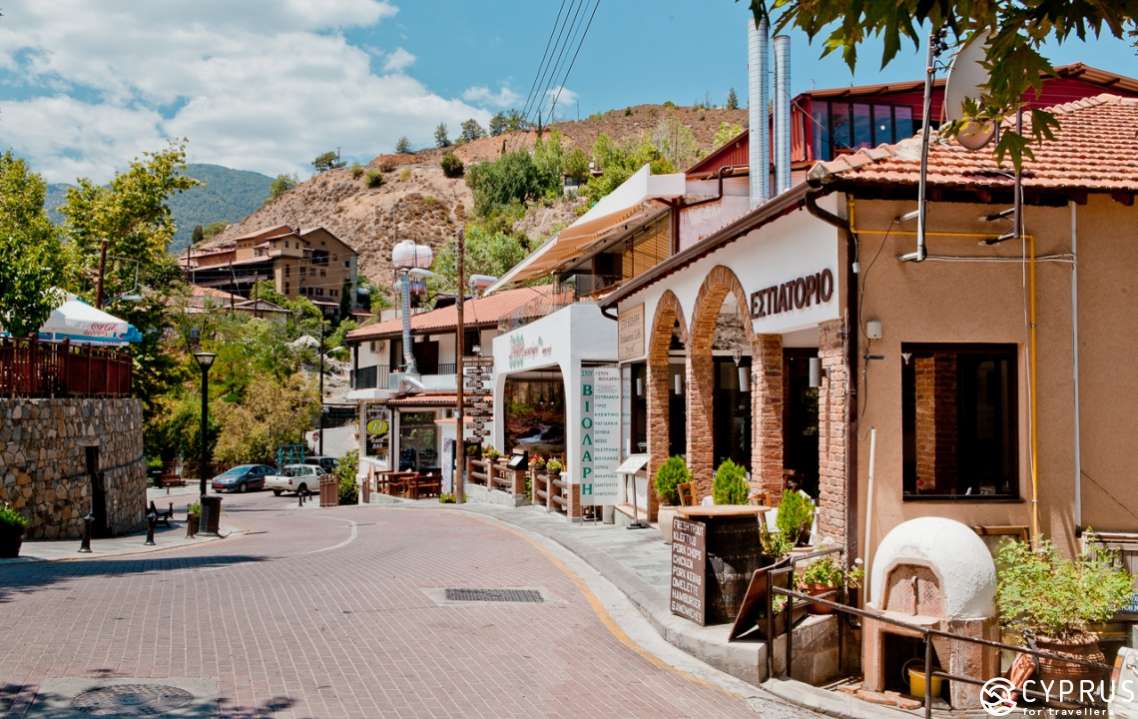
Kakopetria’s central square is also typical of the mountain villages of the island. It is basically made up of restaurants and taverns linked by spacious verandas and terraces surrounded by small shops, kiosks, banks and other public offices on the ground floor of buildings with housing on subsequent floors. This is where you’ll find locals and tourists enjoying evenings in the village discussing the news of the day over a cup of delicious Kypriakes and watching the groups of tourists exhausted from the Cypriot sun happily shuffle into town.
That’s how village life rolls on these days… but you can get a much better understanding of it by throwing yourself into the past by walking up into the historic quarter. Despite the obvious repair and restoration works undertaken to bring the village into the 21st century, the houses have retained their traditional look and elements of the traditional daily life and atmosphere.
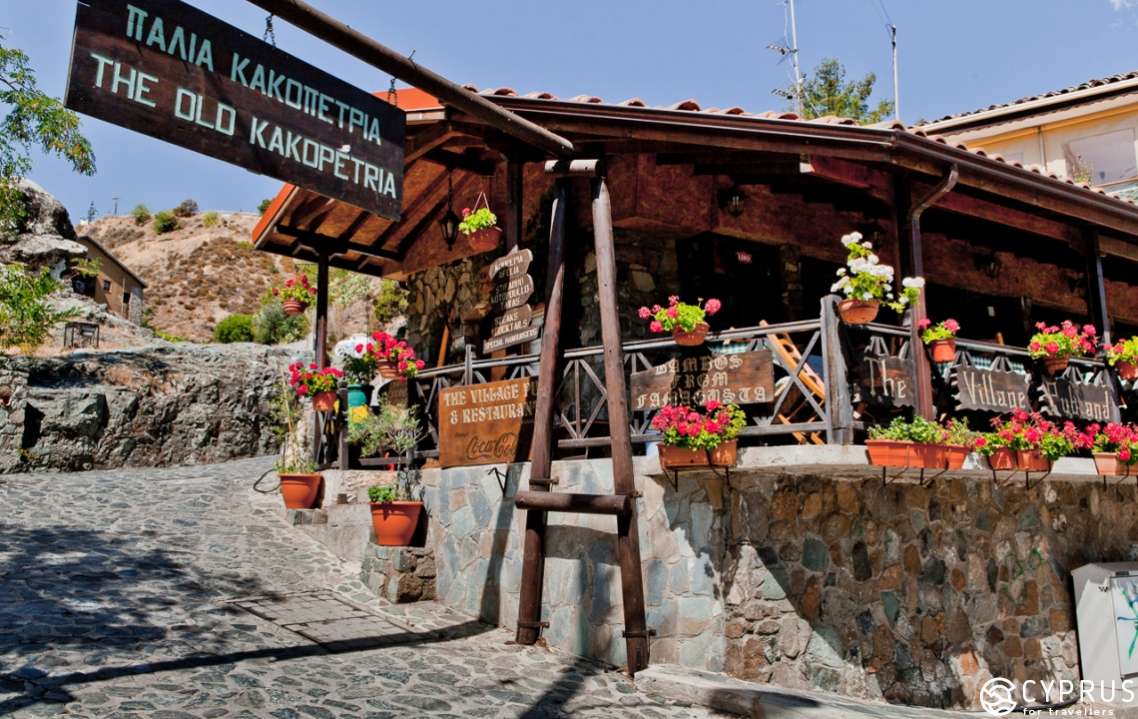
-
Suggested route: Historic quarter: the streets and authentic buildings, the Church of Metamorphosis tou Sotiros with its impressive iconostasis, next door to a tiny olive oil production and Linos winery museum; the Old Power Station; the Mill Hotel; the tourist eco-trail, the Church of Agios Nikolaos tis Stegis (which translates as «the church of St. Nicholas with a roof»), which is on the UNESCO Heritage list thanks to its unique architecture and stunning 13th century frescos. Return to the central square: rest, have lunch; walk along the main street to the waterfall and continue another 300m to the Ancient Church of Panagia Theotokos and the Agios Georgios Perachoritis (both are «tis Stegis» and incredibly impressive in terms of their age, architecture and fragments of fresco that have survived to this day.)
-
It’s fascinating: the village seems to spring forth out of stone; huge boulders are laid in the empty sections between houses thus strengthening the «terraces» which are divided up into orchards and vegetable gardens, or cultivated as vineyards.

The central street of Palaias Kakopetrias is home to Cypriot home-made sweets — «glyca-tou-kutaliou» (which translates from Greek as «sweets on a spoon»). You’ll find all kinds of fruit and berries in syrup, as well as candied fruit, jams and marmalades to suit everyone’s taste (rose, orange, green walnut, cherry, etc.). They are a real must-buy. On a hot day, the sweets on a spoon are usually served with a glass of cold water. The price of this unique pleasure: 1 euro (per jar).
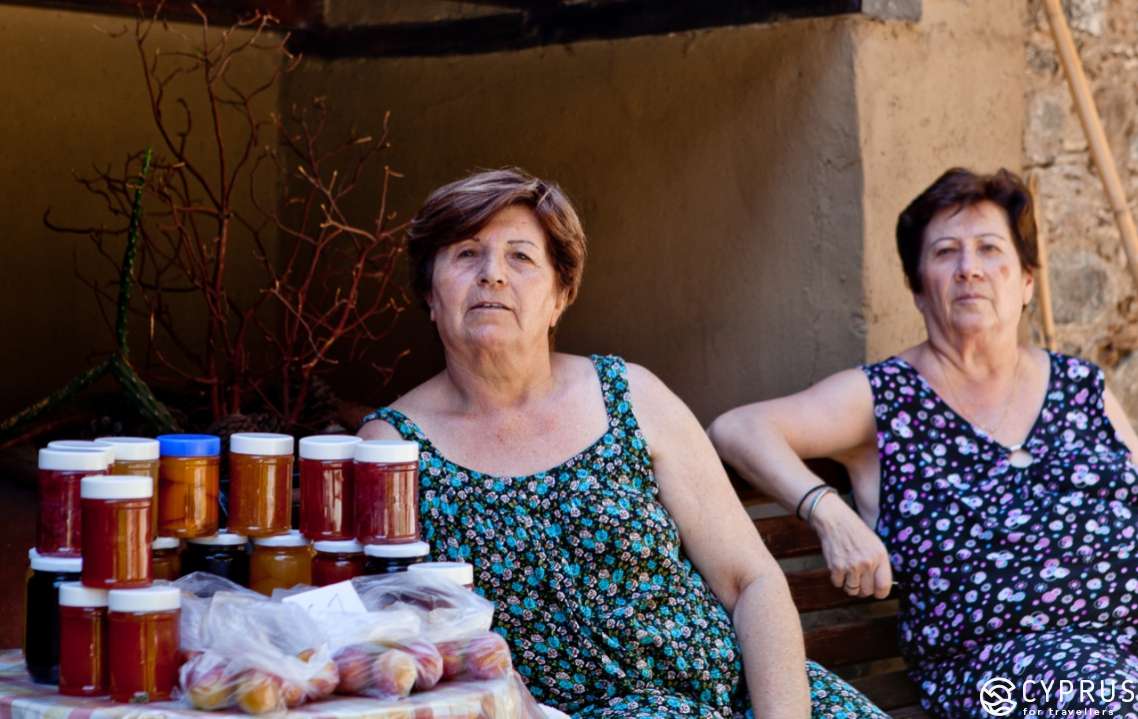
There are also souvenir shops, a miniature cafe, and restaurants in village hotels and hostels for any budget.
The village is generally very green and beautiful. Everywhere you look, you can find unexpected, picturesque nooks and crannies. What’s more, the village is very ... medieval: its scattered stacks of buildings are staggering as they squeeze in and hang over the narrow winding streets and alleyways. The severe lack of space gave rise to bizarre decisions back in the day. The traditional houses (often with irregular, sharp-cornered designs) are made of stone (ground floor and basement), while the upper floors are made of wood with mud walls. Their roofs are now tiled whereas in ancient times they would have been boarded with wood.
We enter the courtyard of the church of Metamorphosis tou Sotiros (built in 1520), which is in the center of Old Kakopetria. There was a wedding here yesterday: there is bright confetti strewn all around... from the church grounds, a panoramic view opens up of the other side of Kakopetria: its modern area. There are 16th century icons and a high, carved iconostasis inside the church. The painter of the fresco painting was recently established as Simeon Afxentis. Until 1994, this church was Kakopetria’s main church and held up to 150 parishioners.
The extensions on its grounds were made by the villagers between 1880 and 1960.

Please note: as is common in Cypriot churches, you can place candles and leave a voluntary donation here.
There is a drinking water tap in the wall near the entrance.
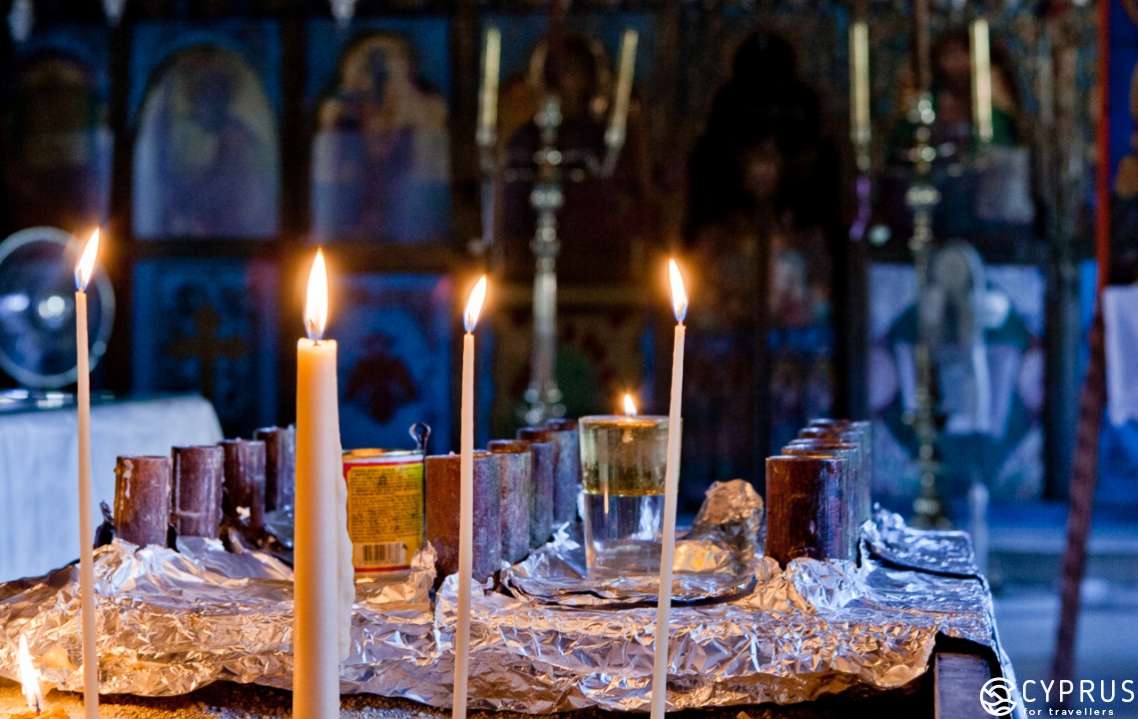
The olive oil production museum (also in the church courtyard) has old millstones, a press, and jugs and bottles decorated with braided vines used to store the oil. There are helpful information stands inside the building that describe the process and provide historical facts in both Greek and English as well as enlarged photos. Basically, the whole process looked something like this: the harvested olives were delivered to the juicing house where they were crushed (for 1-2 hours), they were then transferred to the press (millstone) and the resulting oil was poured into the bottles via a groove.
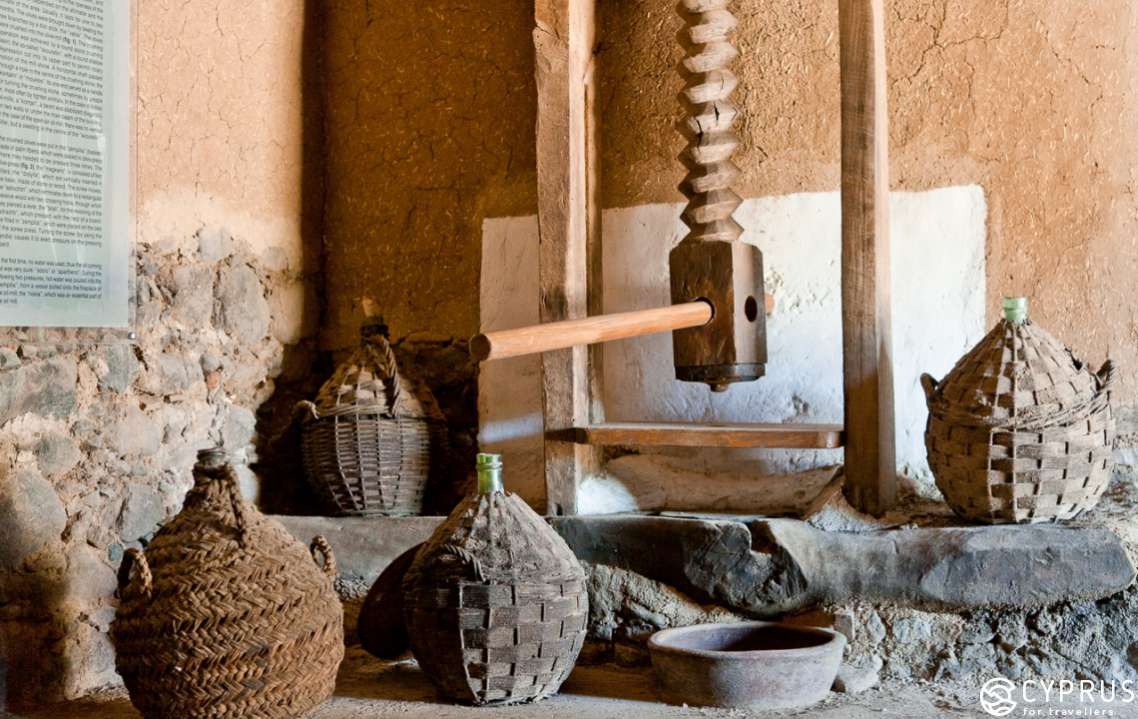
Incidentally, if you walk further along the main street in the same neighborhood, then turn right into an inconspicuous lane (it does have a sign at least) you’ll come across another museum — the Winery (Linos). It’s worth noting that the basic principle of squeezing grapes for juice for winemaking is essentially the same as that of olive oil production: it uses the same press and is rotated with wooden levers with a groove where the squeezed grape juice flows into large earthenware jars. The most interesting part follows: there were two ways of winemaking — a 10-minute version and a longer, classic method, which involved storing the wine for a long time.

Mr. Charalambous told a curious fact: the village had its own electricity 90 years ago thanks to water energy, even though Nicosia had not yet been fully electrified at that time. The power station was built owing to the efforts of Christos Vasiliou (in 1926) and if you turn into the narrow street of Minas Filippou then walk to the end all the way to the ravine, you’ll see what is left of the local aqueducts supplying water to the 50-metre high tower (built in 1927) on the opposite slope owned by the Vasiliou family. The Electricity Authority of Cyprus is working with the municipal Council of Kakopetria to restore the local hydroelectric power station and there are plans to open a museum using the ruins of the first facility.
On the opposite side (we crossed the bridge over the river) of this deep ravine, there is an unusual hotel, The Mill («Milos») whose architecture appears a little sinister at dusk. The locals explained that the hotel with its eccentric exterior appearance (yet very standard interior design) was inspired by the overall character of Old Kakopetria thus leading the architect to design the ground floor with huge stone blocks, which then alternate with huge wooden beams and gradually become plaster walls and long cool terraces with numerous small windows with traditional carved frames.
The surprise piece de resistance — high domed rotundas and a spiral staircase, decorated with flowers. Some impressionable tourists think it looks like the famous «Dracula's castle», albeit with a touch of local colour. At the foot of this popular place to stay and local landmark, you’ll find a cafeteria of the same name. That’s not all... I also recommend you walk down even further where you can see the watermill (mid-18th century.) Its horizontal blades are in constant motion thanks to the waterfall running down from up high. This is where you can start an exciting walking tour of the newly-equipped tourist trail along the mountain stream. This is an experience you shouldn’t miss!

Please note: there are several wooden bridges that cross the stream at various point along the trail. You can always return to the historical part of Kakopetria by taking one of these paths.
As Charalambous told us, the trails are currently about 7 km long but work is underway and by early 2017 the path will extend 10 km. This will increase the accessibility of other tourist hotspots and pilgrimage sites in Cyprus such as the Medieval Church of Agios Nikolaos tis Stegis (UNESCO protected), an ancient former monastery church known for its unique and well-preserved frescoes as well as an architectural style named «under a roof», which was typical for that era.

We visited the church by car: driving along a winding country road that runs up the mountain slopes above the village. Looking back, it looked like you could fit it in the palm of your hand.
The church is the only structure from the ancient monastery (first built in the 11th century) still standing. Its architecture and interior design have the hallmarks of Byzantine culture. However, it probably flourished under the Franks. This can be seen from the 13th-century frescoes and impressive icon of St. Nicholas the Wonderworker donated by knights. It was during this period that the church was gained its V-shaped «roof» that covered its cruciform layout and dome.
The church’s iconostasis dates back to the 17th century. The altar gate, the icon of St. Nicholas, and the icons depicting Christ and the Virgin on the iconostasis are all works of Paul the hagiographer (historians suggest that he even made the Cross). By this time the monastery had almost ceased to exist.
Later, a famous Russian traveller, the monk Vasily Grigorovich-Barsky (1735), also visited. He wrote that he only met a few monks. Soon thereafter, the former monastery’s possessions were transferred to the clergy and then the lay people.
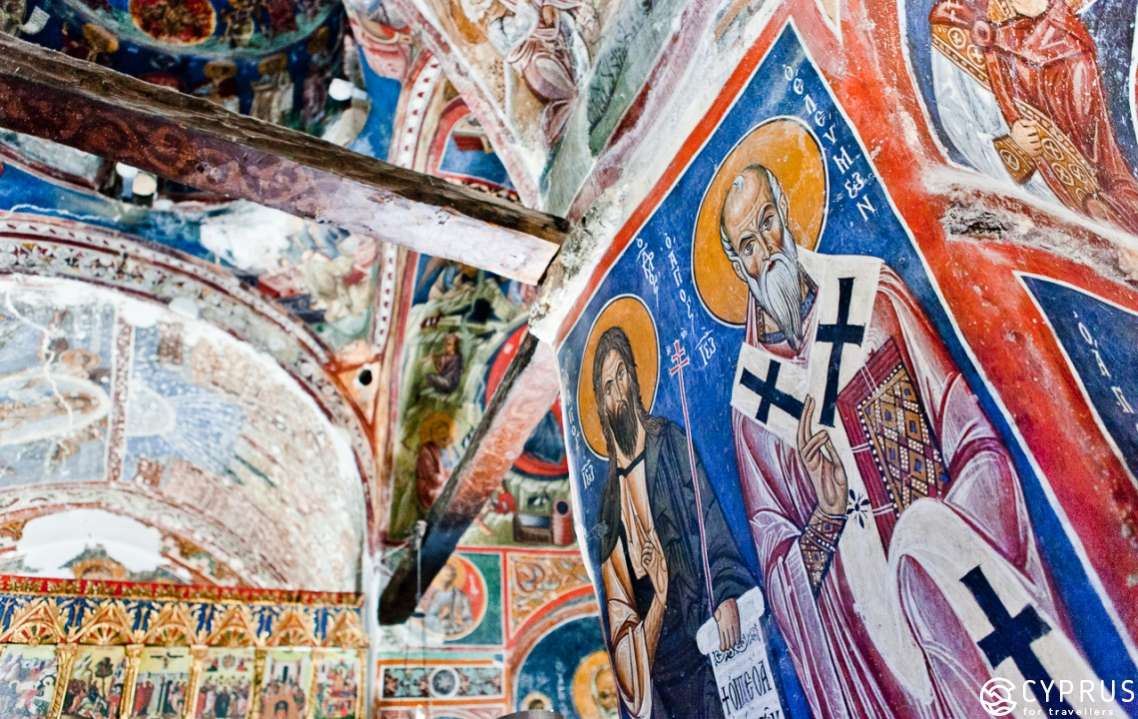
We returned to the village past the orchards with their branches dripping with fruit. We saw the famous «kakopetritika» apples, as well as sumptuous apricots, plums, and cherries. Going further, we noticed the terraces on the slopes and courtyards of the houses, which are covered with Verico grapes.
As you leave Kakopetria, it’s worth one more visit to the main square where you can relax in one of the cafes or restaurants. For example, Park Restaurant 11 with its main hall that seems to soar over the deep ravine. It has an absolutely stunning view of the local «jungle», the mountain stream and the flock of wild geese that lives on this rocky landscape.
As the evening dusk descended from the mountains, the bright lights and delicious smells rushed from open kitchen windows to meet it. The scent of roses and jasmine rose up in the air and served as a sign that the walk for today was over. It was time to leave this time but we knew we would come here again ... as if visiting old friends.
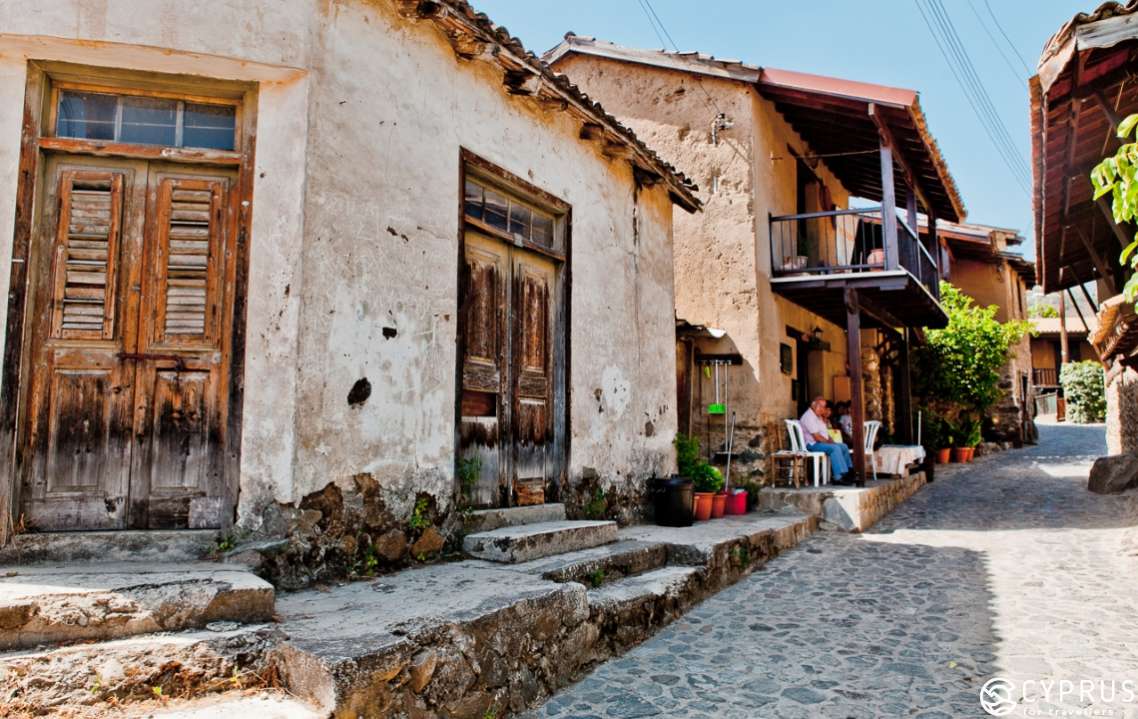
Why it is worth visiting:
You can just wander the streets all day camera in hand (just don’t forget comfortable flat shoes: the streets in the old centre are steep and paved with a large cobblestone). There are breathtaking shots and beautiful sights everywhere you turn!
Even on the hottest days, the village’s lush greenery and the year-round mountain streams and rivers (a rarity in Cyprus) provide a sanctuary from the sun and a coolness to the air. In the winter, village life may calm down but the landscape is ablaze with the bright colors of fading foliage and the clear cool air is dotted with the occasional puff of smoke from chimneys.
Kakopetria is in the Troodos region. So, if you decide to make a stop here, it's really convenient for your other planned visits in and around Troodos.
The village is one of a chain in the Solea Valley so there’s the opportunity to make a trip of it and really get to know the local architectural style, way of life, and local people's lifestyle while admiring the rural landscape and views of the mountain peaks.
Kakopetria is also well renowned for its trout (pestrofa in Greek). You can order a trout dish in any taverna or restaurant: it’s served with a garlic or lemon sauce.
The village and surrounding area are home to a wealth of unique, ancient architectural sites which means your holiday will be anything but dull!
How to get there: The 304 bus runs from Nicosia daily. If you have your own car, follow signs to the village. When you arrive, you can park in the car park near the St. Panteleimon Church on Archiepiskopou Makariou Street or in the village car park on Ayia Georgiou Street (opposite the Taverna Ais Giorkis)
Until next time!

